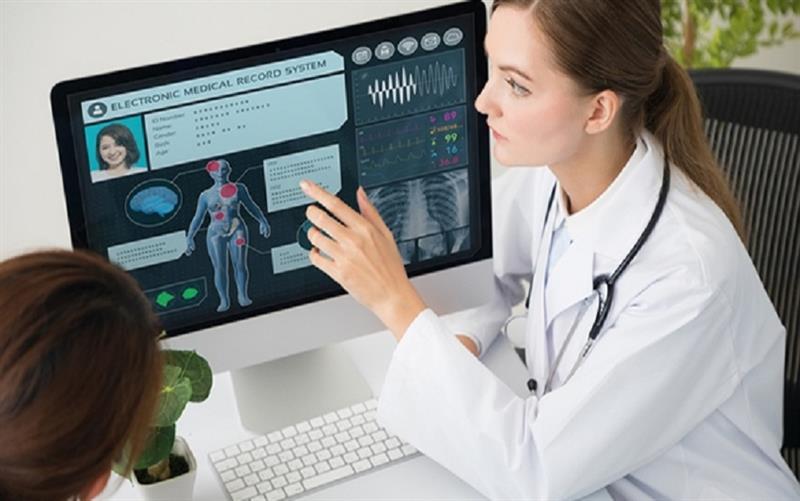
Quality matters profoundly in medical software development, where precision, reliability, and security are paramount. By adhering to regulatory standards, prioritizing security and privacy, ensuring reliability and accuracy, enhancing usability and user experience, fostering interoperability, and embracing continuous improvement, developers can create medical software that delivers optimal patient care and improves healthcare outcomes.
From electronic health records (EHR) systems to diagnostic tools and telemedicine platforms, the reliability and accuracy of these digital solutions are critical for delivering optimal patient care. In this article, we delve into the key factors that contribute to the quality of medical software development.
1. Regulatory Compliance: Upholding Standards for Safety and Efficacy
Regulatory compliance is the cornerstone of medical software development. Depending on the region, developers must adhere to stringent guidelines set forth by regulatory bodies such as the Food and Drug Administration (FDA) in the United States or the Conformité Européenne (CE) in Europe. These regulations ensure that medical software meets rigorous standards for safety, efficacy, and data privacy. Compliance with regulations such as the FDA's 510(k) clearance or premarket approval (PMA) process requires meticulous attention to detail throughout the development lifecycle.
2. Security and Privacy: Safeguarding Patient Data
Patient confidentiality is sacrosanct in healthcare, making security and privacy paramount concerns in medical software development. Developers must implement robust encryption protocols, access controls, and authentication mechanisms to safeguard sensitive patient information from unauthorized access or data breaches. Compliance with regulations like the Health Insurance Portability and Accountability Act (HIPAA) in the United States sets a high bar for protecting patient privacy and confidentiality.
3. Reliability and Accuracy: Precision in Diagnosis and Treatment
Medical software must be reliable and accurate, especially in diagnostic and treatment decision support systems. From image analysis algorithms to predictive analytics models, any margin for error can have profound implications for patient outcomes. Rigorous testing methodologies, including validation against clinical data and real-world scenarios, are essential for ensuring the reliability and accuracy of medical software. Additionally, continuous monitoring and feedback mechanisms enable developers to refine and improve software performance over time.
4. Usability and User Experience: Enhancing Clinician Efficiency
Usability and user experience play a crucial role in the adoption and effectiveness of medical software. Clinicians are often pressed for time, and cumbersome or unintuitive interfaces can impede workflow efficiency. User-centered design principles, such as task analysis and iterative usability testing, help developers create software interfaces that are intuitive, efficient, and tailored to the needs of healthcare professionals. By prioritizing usability, medical software can enhance clinician satisfaction and productivity while minimizing the risk of user errors.
5. Interoperability: Seamless Integration for Comprehensive Care
In today's interconnected healthcare ecosystem, interoperability is essential for seamless information exchange between different systems and stakeholders. Medical software should adhere to interoperability standards such as Health Level Seven (HL7) and Fast Healthcare Interoperability Resources (FHIR) to enable integration with electronic health records, medical devices, and other healthcare IT systems. By facilitating data exchange and interoperability, medical software empowers care teams to make informed decisions and deliver comprehensive patient care.
6. Continuous Improvement: Iterative Development and Feedback Loops
Quality assurance in medical software development is an ongoing process that requires continuous improvement and refinement. By embracing agile development methodologies and incorporating feedback from clinicians, patients, and other stakeholders, developers can iteratively enhance software functionality, performance, and usability. Regular software updates and maintenance ensure that medical software remains current with evolving clinical guidelines, technological advancements, and regulatory requirements.
7. Scalability and Performance: Meeting Growing Demands
As healthcare systems expand and patient populations grow, medical software must be able to scale to meet increasing demands. Scalability involves designing software architectures that can handle growing volumes of data, users, and transactions without compromising performance or reliability. Load testing and performance tuning are essential to identify and address potential bottlenecks and ensure that medical software remains responsive and stable under varying workloads.
8. Risk Management: Mitigating Potential Hazards
Medical software development involves inherent risks, including the potential for adverse events or unintended consequences. Developers must conduct thorough risk assessments to identify and mitigate potential hazards throughout the software lifecycle. This includes risk analysis during requirements gathering, design, implementation, testing, and deployment phases. By proactively addressing risks and implementing appropriate risk management strategies, developers can enhance the safety and effectiveness of medical software.
9. Documentation and Traceability: Ensuring Transparency and Accountability
Comprehensive documentation is essential for ensuring transparency, accountability, and traceability in medical software development. Developers must maintain detailed records of requirements, design specifications, test plans, and validation reports to demonstrate compliance with regulatory standards and best practices. Traceability matrices enable stakeholders to trace requirements through the development process and ensure that software functionality aligns with intended use cases. Documentation also facilitates knowledge transfer and supports ongoing maintenance and support activities.
10. Change Management: Managing Software Updates and Modifications
Medical software is subject to frequent updates and modifications to address evolving clinical needs, regulatory requirements, and technological advancements. Effective change management processes are critical for managing software updates while minimizing disruptions to clinical workflows. Developers must implement version control systems, release management procedures, and change control processes to track and manage changes systematically. Thorough regression testing is essential to validate software updates and ensure that they do not introduce new issues or compromise existing functionality.